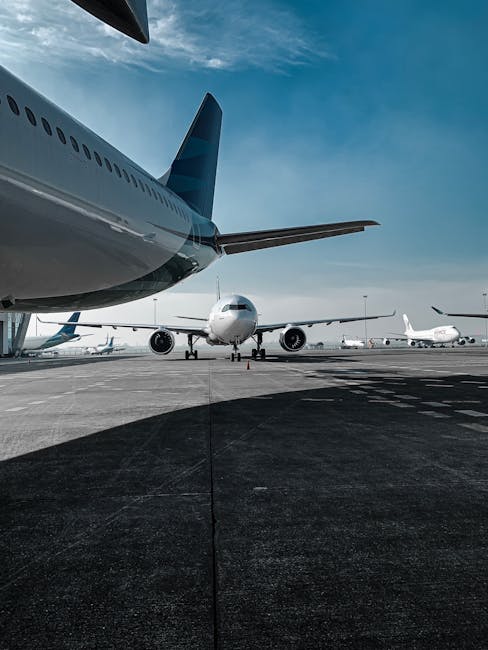On July 6, 1998, the last commercial aircraft lifted off the runway of Hong Kong’s Kai Tak International Airport, closing a remarkable chapter in aviation history. For almost 73 years, Kai Tak had served as the city’s aerial gateway, but it was its final 24 years—when the “checkerboard approach” was standard for heavy jets—that cemented its legend. Nestled precariously amid densely packed skyscrapers and craggy hills, Kai Tak’s single runway and infamous approach demanded the utmost from even the most seasoned pilots. Today, 27 years since its closure, the memories of thundering 747s banking sharply over Kowloon’s rooftops remain etched in the hearts of avgeeks, pilots, and travelers alike.
The Birth and Growth of a Legend
Kai Tak’s beginnings were humble. Built in 1925 on reclaimed land in the Kowloon bay area, its first life was as a training field for aviators. Over the decades, as Hong Kong grew into a trading powerhouse, the airport expanded with the city, eventually becoming a bustling international hub. By the 1970s and 80s, Kai Tak was handling millions of passengers and some of the world’s largest commercial aircraft, all with a single, 3,390-meter (11,122 ft) runway jutting into Victoria Harbour.
But it was the airport’s location that made it truly unique—and infamous. Surrounded by mountains to the north and east, and hemmed in by the densely populated city on all sides, Kai Tak presented pilots with a challenge unlike any other major airport in the world.
The Checkerboard Approach: A Test of Skill and Nerve
What made Kai Tak legendary was its “Runway 13 IGS approach,” more famously known as the “checkerboard approach.” Aircraft arriving from the west could not make a straight-in approach due to the mountains and cityscape. Instead, pilots would descend towards a massive red-and-white checkerboard painted on a hillside—their visual cue—after flying a precise Instrument Guidance System (IGS) route.
- Step 1: Aircraft would approach over the harbor, often passing just above the city’s bustling districts.
- Step 2: At about 4.8 nautical miles from the runway, at 675 feet altitude, pilots would spot the checkerboard marker and make a dramatic 47-degree right-hand turn, hand-flying the jet in close proximity to apartment blocks and office towers.
- Step 3: The final moments were a heart-pounding, visual-only dash to the runway, with pilots aligning their aircraft with Runway 13 in the last seconds before touchdown.
This approach was not for the faint of heart. It required split-second precision, nerves of steel, and the ability to manually land widebody jets such as the Boeing 747 or McDonnell Douglas MD-11 in challenging, often turbulent conditions. For many pilots, landing at Kai Tak was a career-defining achievement.
Why Did Kai Tak Matter?
Kai Tak’s approach was more than just a technical oddity—it was a living laboratory for pilot skill, an icon for aviation enthusiasts, and a symbol of Hong Kong’s dynamism. Its unique challenges and visual spectacle drew spotters and photographers from around the world, with images of jumbos banking over neon-lit neighborhoods becoming aviation folklore.
From a safety and training perspective, Kai Tak forced airlines to rethink their procedures. Pilots assigned to Hong Kong flights underwent rigorous simulator sessions replicating the checkerboard approach. Airlines developed special standard operating procedures (SOPs) for the airport, and only captains with specific Kai Tak training were permitted to land there.
For passengers, landing at Kai Tak was often both thrilling and unnerving. Windows filled with glimpses of laundry lines, rooftop soccer games, and the city’s vibrant life—moments before the wheels hit the tarmac. The approach became a part of the Hong Kong travel experience, with some travelers booking flights just for the adrenaline rush.
Influence on Airport Design and Aviation Technology
Kai Tak’s operational constraints spurred innovation in both airport design and aviation technology. The airport operated at the very limits of what was possible with then-current aircraft and navigation systems.
- Navigation Aids: The IGS system was a variant of the standard ILS (Instrument Landing System), modified to guide aircraft to a point offset from the runway centerline. Pilots were required to hand-fly the final segment—a rare requirement for large airports.
- Aircraft Handling: The approach championed the value of manual flying skills at a time when automation was becoming the norm. It reinforced the importance of pilot proficiency and judgment, elements that remain central in today’s training programs.
- Airport Planning: Kai Tak’s limitations—single runway, lack of expansion space, and environmental impact—served as a case study for future airport projects. Its closure led directly to the creation of Hong Kong International Airport at Chek Lap Kok, one of the world’s most advanced and spacious airfields, designed to accommodate future growth with safety and efficiency.
The End of an Era
By the 1990s, Kai Tak was bursting at the seams. Hong Kong’s surging population and booming economy demanded more capacity than the old airport could safely provide. Nighttime curfews, noise complaints, and the ever-present risk of an accident in the urban environment made a new airport unavoidable.
The last commercial flight, Cathay Pacific’s CX251, departed on July 6, 1998, marking the end of Kai Tak’s storied legacy. The checkerboard was eventually painted over, and the site was transformed into a cruise terminal and urban park. But the legend of Kai Tak endures.
Legacy and Lasting Impact
Kai Tak’s closure marked the end of an era when aviation was as much about human skill as technological progress. For those who flew in or out, who worked the ramps, or who gathered on rooftops to watch, the airport’s memory is undimmed.
The checkerboard approach remains a benchmark for pilot training and a touchstone for aviation enthusiasts. Videos of 747s banking over Kowloon regularly go viral, inspiring new generations to marvel at what was possible. Kai Tak’s story is a reminder of how geography, technology, and human ingenuity can combine to create something truly extraordinary.
Today, Hong Kong International Airport at Chek Lap Kok stands as a testament to the lessons learned at Kai Tak—designed for safety, efficiency, and future growth. Yet, for many, the thrill of that final turn at 675 feet, the roar of engines echoing through the city, and the sight of a heavy jet threading its way between buildings are irreplaceable.
Conclusion: An Icon That Will Never Be Forgotten
Twenty-seven years after its closure, Kai Tak’s legendary approach continues to captivate. It pushed pilots—and aviation technology—to their very limits, gave passengers a landing experience like no other, and left an indelible mark on the industry. In an era of ever-safer, more routine aviation, Kai Tak reminds us of a time when flying demanded a unique blend of skill, courage, and respect for the environment. For avgeeks around the world, its legacy is timeless, and its checkerboard turn will never be forgotten.



